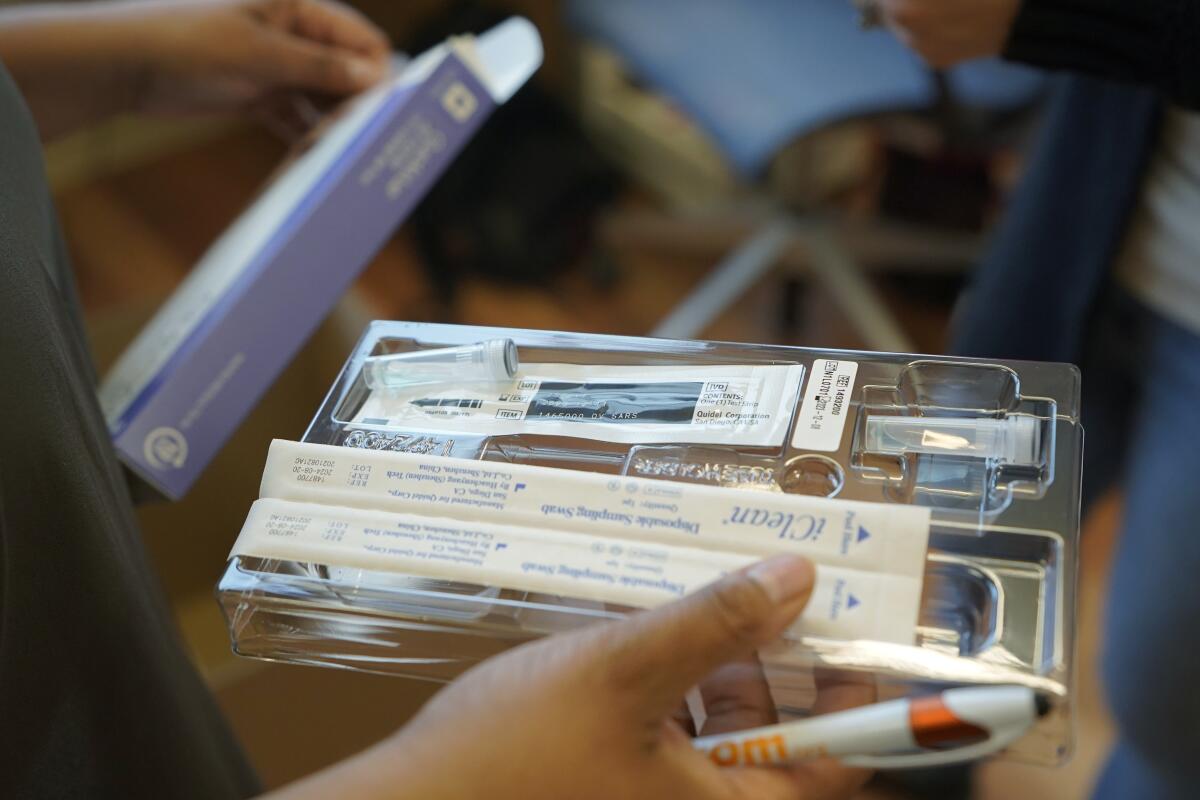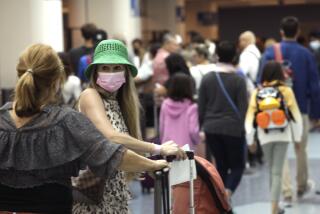U.S. death toll from COVID-19 reaches 900,000, driven by Omicron

- Share via
Propelled in part by the wildly contagious Omicron variant, the U.S. death toll from COVID-19 hit 900,000 on Friday, less than two months after eclipsing 800,000.
The two-year total, as compiled by Johns Hopkins University, is greater than the population of San Francisco, Indianapolis or Charlotte, N.C.
The milestone comes more than 13 months into a vaccination drive that has been beset by misinformation and political and legal strife, though the shots have proved safe and highly effective at preventing serious illness and death.
“It is an astronomically high number. If you had told most Americans two years ago as this pandemic was getting going that 900,000 Americans would die over the next few years, I think most people would not have believed it,” said Dr. Ashish K. Jha, dean of the Brown University School of Public Health.
He lamented that most of the deaths happened after the vaccine gained authorization.
“We got the medical science right. We failed on the social science. We failed on how to help people get vaccinated, to combat disinformation, to not politicize this,” Jha said. “Those are the places where we have failed as America.”
Just 64% of the population is fully vaccinated, or about 212 million Americans, according to the Centers for Disease Control and Prevention.
“We have underestimated our enemy here, and we have underprepared to protect ourselves,” said Dr. Joshua M. Sharfstein, a public health professor at Johns Hopkins Bloomberg School of Public Health. “We’ve learned a tremendous amount of humility in the face of a lethal and contagious respiratory virus.”
Nor is COVID-19 finished with the United States. Dr. Andrew Noymer, a professor of public health at the UC Irvine, predicted the U.S. will hit 1 million deaths by March 1.
“I think it’s important for us not to be numbed. Each one of those numbers is someone,” said the Rev. Gina Anderson-Cloud, senior pastor of Fredericksburg United Methodist Church in Virginia. “Those are mothers, fathers, children, our elders.”
The milestone came as Omicron is loosening its grip on the country.
The number of new cases recorded per day has plunged by almost half a million nationwide since mid-January, the curve trending downward in every state but Maine. And the number of Americans in the hospital with COVID-19 has fallen 15% over that period to about 124,000.
Deaths are still on the rise in at least 35 states, reflecting the lag time between when victims become infected and when they succumb.
But the trends are giving public health officials hope that the worst of Omicron is coming to an end, though they caution that things could still go bad again and dangerous new variants could emerge.
Los Angeles County may end outdoor mask requirements in a few weeks, Public Health Director Barbara Ferrer said Thursday. But that is unlikely to happen before the Feb. 13 Super Bowl, which will draw as many as 100,000 people to SoFi Stadium in Inglewood.
Ferrer said COVID-19 infections and hospitalizations in California’s biggest county are falling, and deaths may start to drop as well.
“Post-surge does not imply that the pandemic is over or that transmission is low, or that there will not be unpredictable waves of surges in the future,” she warned.
Arizona has also seen its daily case and hospitalization numbers decline, though deaths are still on the rise, climbing from average of about 61 a day last week to almost 79 as of Tuesday.
“We have reason to be hopeful, but we are by no means out of the woods,” Elizabeth Jacobs, a University of Arizona professor of epidemiology, said Thursday on Twitter.
Iowa Gov. Kim Reynolds said she is calling an end to the state’s coronavirus public health emergency, a move that will limit the release of health data.
The step reflects the governor’s long-held belief that it is time to get past pandemic restrictions and move toward the point when COVID-19 becomes, like the flu, a manageable part of everyday life.
Overall, new cases in the U.S. have plummeted from a record-obliterating average of more than 800,000 a day in mid-January to about 357,000.
More to Read
Sign up for Essential California
The most important California stories and recommendations in your inbox every morning.
You may occasionally receive promotional content from the Los Angeles Times.










